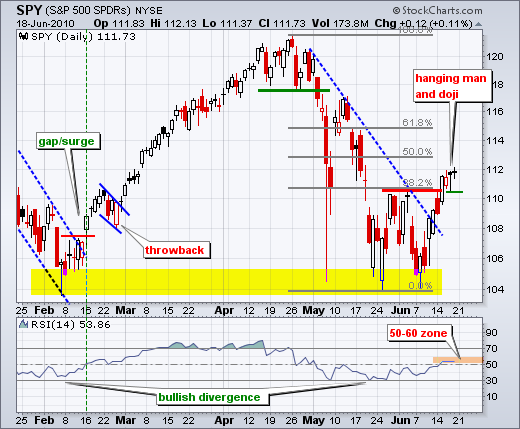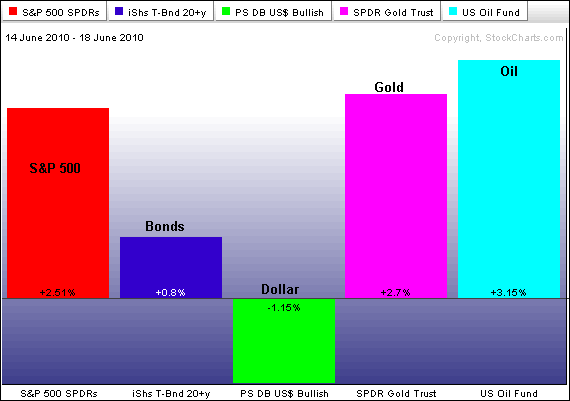
Even though SPY is short-term overbought after a two week surge, there are simply no signs of weakness on the daily chart. SPY broke above resistance with a long white candlestick on Tuesday and this breakout is holding. The ETF consolidated over the last few days with a hanging man on Thursday and a doji on Friday. Yes, these can foreshadow short-term reversals, however, they require confirmation with further downside. At this point, the hanging man and doji simple represent a rest after the surge. A move below the hanging man low would be the first sign of weakness. RSI edged above 50 and remains above 50. Momentum is in good shape as long as RSI holds above 50.
On the 30-minute chart, SPY surged with a gap up on June 10th and has been strong ever since. There were at least three consolidation/pullbacks and three mini breakouts along the way. These consolidation/pullbacks are short-lived and the rally soon resumes. This is a sign of strength. With a breakout again on Friday, support at 110.5 was further affirmed. The futures are pointing to a sharply higher open that will further affirm support at 110.5.

Key Economic Reports:
Tue - Jun 22 - 09:00 - FOMC Meeting Begins
Tue - Jun 22 - 10:00 - Existing Home Sales
Wed - Jun 23 - 10:00 - New Home Sales May
Wed - Jun 23 - 10:30 - Crude Inventories
Wed - Jun 23 - 14:15 - FOMC Rate Decision
Thu - Jun 24 - 08:30 - Durable Orders May
Thu - Jun 24 - 08:30 - Initial Claims
Fri - Jun 25 - 08:30 - GDP Estimate
Fri - Jun 25 - 09:55 - U Michigan Sentiment
Charts of Interest: AMZN, CEPH, EBAY, FWLT
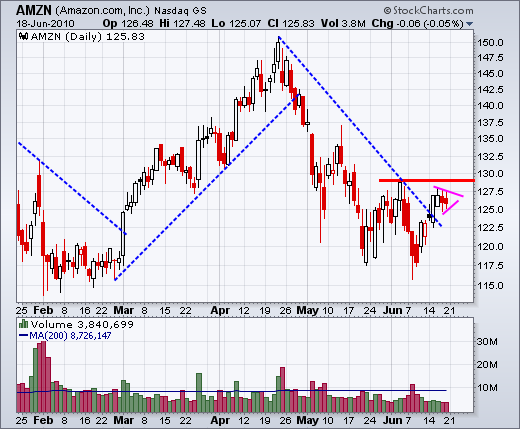
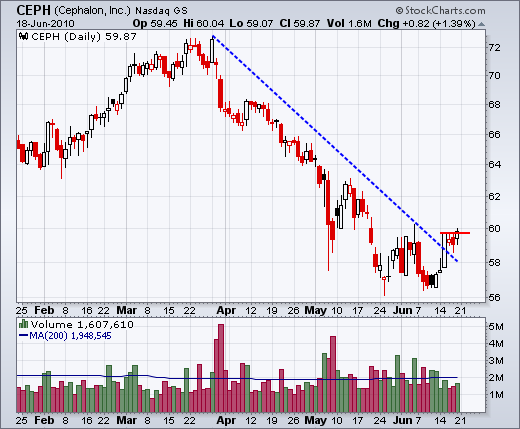
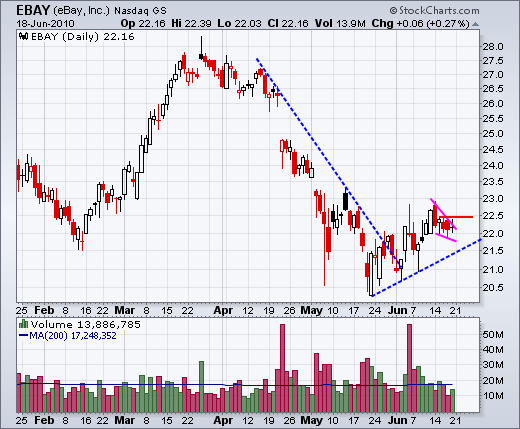
This commentary and charts-of-interest are designed to stimulate thinking. This analysis is not a recommendation to buy, sell, hold or sell short any security (stock ETF or otherwise). We all need to think for ourselves when it comes to trading our own accounts. First, it is the only way to really learn. Second, we are the only ones responsible for our decisions. Think of these charts as food for further analysis. Before making a trade, it is important to have a plan. Plan the trade and trade the plan. Among other things, this includes setting a trigger level, a target area and a stop-loss level. It is also important to plan for three possible price movements: advance, decline or sideways. Have a plan for all three scenarios BEFORE making the trade. Consider possible holding times. And finally, look at overall market conditions and sector/industry performance.

